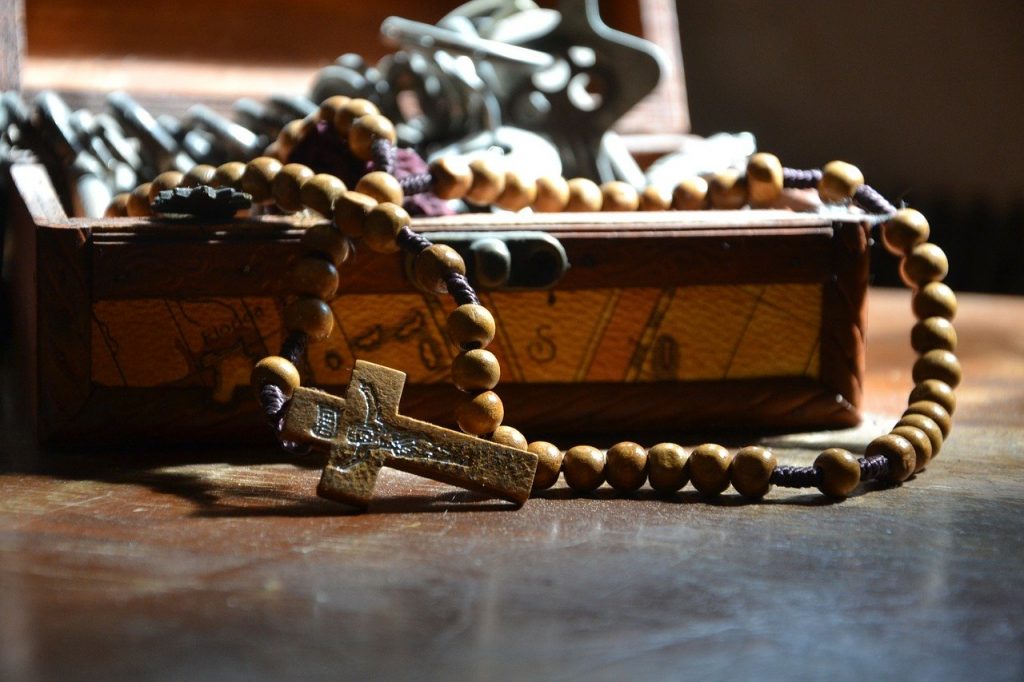As Catholics, we commonly have religious items blessed, whether it be a priest or bishop. When we have a rosary, crucifix, palm branch, or other item blessed it becomes permanently sanctified for a sacred purpose. However, over time statues and rosaries may become broken from use, or palm may naturally degrade. As we are called to show proper reverence for blessed objects, how do we properly dispose of them when damaged?
“Sacred objects, which are designated for divine worship by dedication or blessing, are to be treated reverently and are not to be employed for profane or inappropriate use even if they are owned by private persons.” – Code of Canon Law 1171
In showing proper reverence, Catholic tradition simply states blessed items that are broken or damaged should be burned or buried. After an item has been burned, its ashes should also be buried. If the item does not disintegrate into the Earth, such as plastic, it is acceptable to break apart the item then discard it appropriately. In the case of votive candles, if it is safe to do so they should be burned completely.
The tradition of returning blessed items to the Earth stems from the idea that an object sanctified in God’s name should be returned to God, much like the way a person is buried and returned to the earth.
While the tradition of returning objects to the earth stems back thousands of years, in 1874 the Sacred Congregation for the Rites and the Holy Office issued formal determinations on what proper disposal methods are for blessed items. Any linen, vestment, or altar cloth should be burned and the ashes buried. Excess or contaminated Holy Water should be poured directly into the ground. Palms should be burned, and the ashes used for Ash Wednesday with the excess buried. Similarly, a rosary or statue would be buried.
Credit: ucatholic

